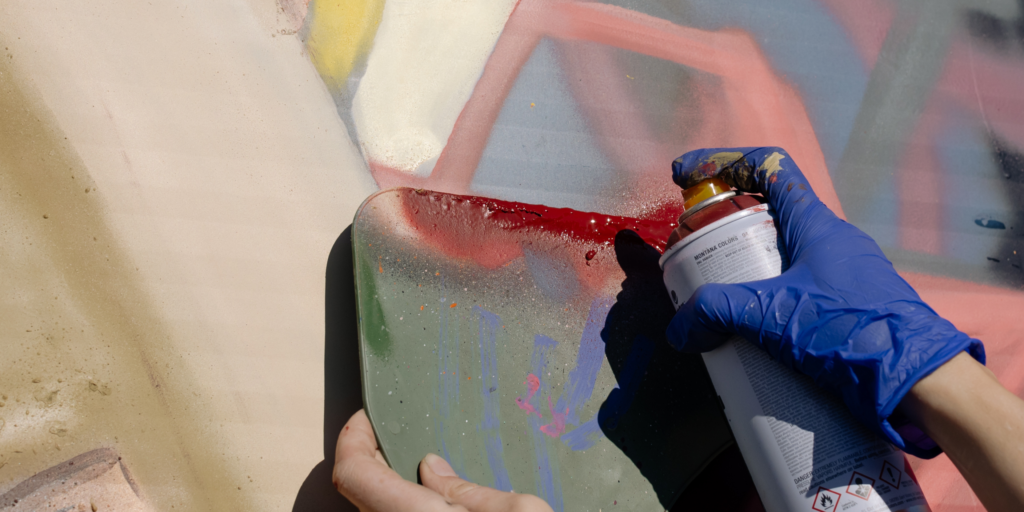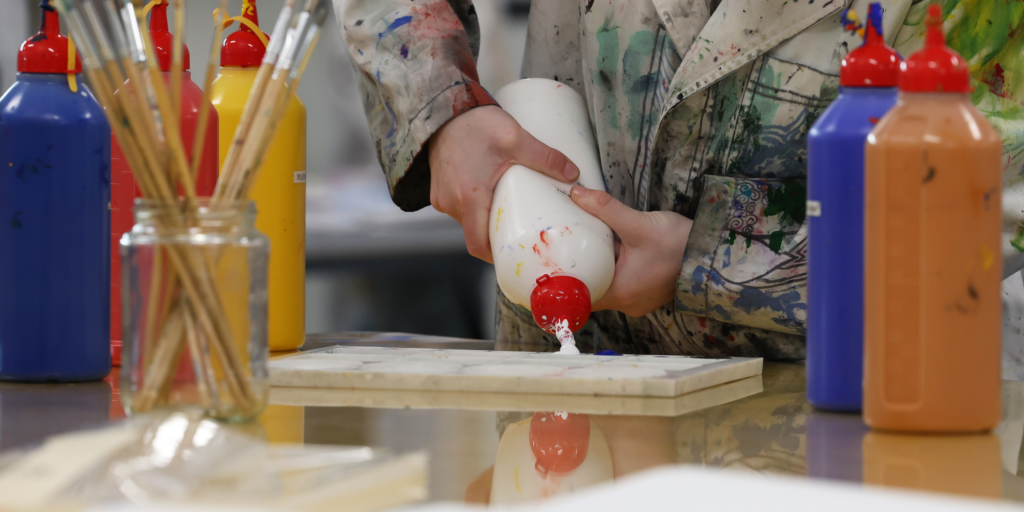Selection of paint is the most significant part of a good painting job. The most frequently debated topics are latex and acrylic paint. On one hand, they can be used in various situations. On the other hand, it’s important to understand the differences.
Latex paints are water-based and made of water, latex resin, and pigment. Its simple operation, fast drying time, and low odor are the reasons why it is so popular across the world. At the same time, acrylic paints are made up of resin, pigment, and solvent, respectively. Its ability to combine, to endure, and its splendid colors are the things that put it (the fabric) on a pedestal.
Acrylic and latex paint vary mostly by their composition. Latex is water-based. Meanwhile, acrylic is solvent-based. The drying time, durability, and methods of application differ from one another due to this the most basic difference. Having a deep understanding of them will enable you to choose the right paint for your specific project.
Pros and Cons of Latex Paint for Your Project
Latex paint is used for many painting applications because of its features. It dries quickly, so you save a lot of time and can get your artwork done faster. Latex paint has the quality of emitting less odors than oil-based paints, making the process of painting more comfortable. It also quickly dissolves in water with just soap, which makes cleaning an easy job without brushes and tools.

Latex paint has drawbacks. Under this condition, the paint cannot adhere to metal or non-porous surfaces. The latex paint, in particular, may be less smooth in its final drying compared to oil-based paint. Also, the longevity of latex paint is usually inferior to other types of paint, so it is not advisable for areas with frequent cleaning or areas that are subject to high traffic.
Pros and Cons of Acrylic Paint for Your Project
Artists and DIY lovers prefer acrylic paint. Its adaptability is a major advantage. Acrylic paint can be applied to canvas, wood, metal, and cloth. The main advantage of acrylic paint is its quick drying period, which enables the paint to be put on in layers.
Choosing the Right Paint for Your Surface: Latex or Acrylic?
The decision between latex and acrylic paint is multi-dimensional, and there are certain points to keep in mind. First, check to see if the painting surface is in good condition. The latex paint is a perfect option for interior walls, ceilings, and other surfaces that are not routinely cleaned and do not experience rough weather. Nevertheless, acrylic paint has the advantage of being suitable for many surfaces, whether indoors or outdoors.
Tips for Applying Latex Paint to Your Project
The project-preparation process is a matter of concern before latex paint is applied. Get the area clean by removing dirt, oil, and flaking paint. Sand, if needed, is used to prepare the surface so the paint foundation will be smooth. Additionally, there is a need for using a primer if you are painting over a glossy or non-porous surface for proper adhesion.
There is a variety of ways of using latex paints. A roller for larger surfaces and a brush for the finishing touches and edges is a common technique. Thin the paint and apply it evenly by coats, then let it dry before you paint the next. Drips and uneven distribution will not be present.
Steer clear of typical blunders in order to get the best paint finish. The extra coating can lead to leaks or unevenness. Not allowing the layers to dry completely before applying the next one may lead to insufficient adhesion and peeling. To avoid paint being dry, wipe the brush and other tools immediately after using them.
Tips for Applying Acrylic Paint to Your Project
The acrylic paint calls for an initial preparation similar to the latex paint. First, make sure the surface is clean and dry, then do the painting. When needed, prime to ensure good adhesion and surface finish. Acrylic can be applied by brush, sponge, or airbrush to canvas, wood, or metal.

This is another advantage acrylic paint has over others. It dries fast, so you have to apply it on time. Start off with light coats and add texture or color. The acrylic pigment is easily diluted with water or other acrylic media to achieve glazing or impasto effects.
Avoid the usual mistakes of using acrylic paint by keeping your brushes and tools moist so that the paint will not dry. Wash them promptly with soap and water. Consider a slow-drying medium or work on smaller parts if you are about to carry out a large project or want more time to blend colors.
Making the Right Choice for Your Painting Project
In the end, the surface you’re painting on, the durability of the paint, and the specific techniques or finishes all depend on what type of paint you choose, latex or acrylic. Latex paint is quick to dry and easy to clean; however, it may not be as durable and suit all surfaces. On the other hand, acrylic paint has the advantage of being versatile, resilient, and colorful, but for it to dry fast enough, then, it requires fast labor.
It is best to choose a particular paint from the available options by considering the pros and cons and examining your project needs. Oil paint or acrylic may require careful preparation and proper application for desirable results. Take your time, analyze your choices, and decide for yourself to enjoy the process of painting.

